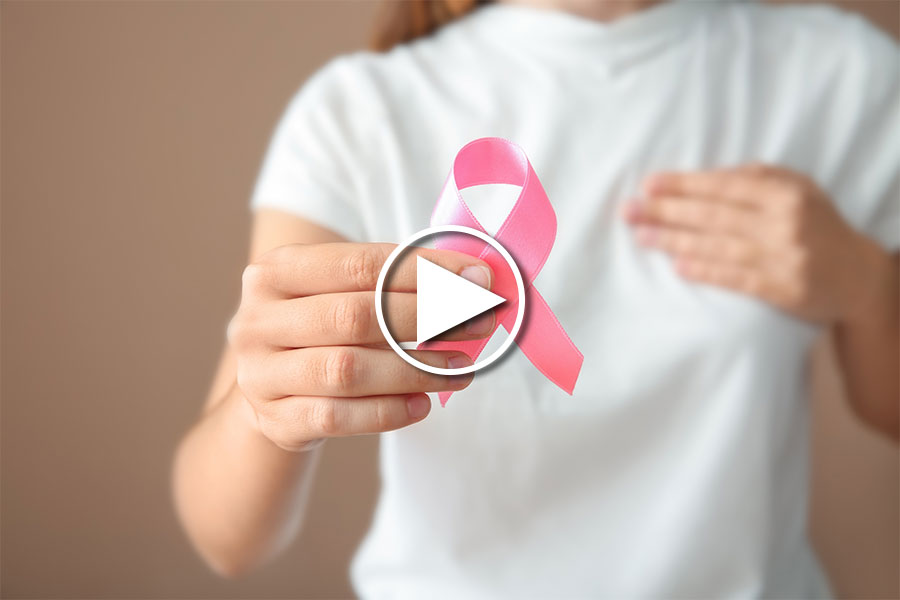Early Detection Guidelines
Reminder:
The best time to give yourself a breast examination is about a week after your menstrual cycle — this is when your breasts are least sensitive to touch and pain. If you don’t menstruate, or are post-menopausal, conduct the breast examination on the same day every month.
Don’t panic if you feel several small lumps. Usually such lumps are normal and it’s important to be conscious of any changes.
Ask a qualified doctor, nurse, midwife, or health worker to teach you the proper technique for doing a breast self-examination (BSE).
Observe How They Look
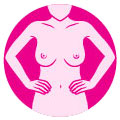
01
Face a mirror, place your hands on your waist and slightly bend forward.
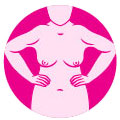
02
Move your shoulders back together with your elbows and feel your chest muscles tighten.

03
Look at your breasts and observe any changes in appearance. Take notice if any of your nipples go inward.

04
Gently press your nipples and check if any discharge or fluid comes out.
Check Your Underarms
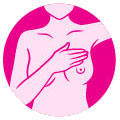
✓
In either a sitting or standing position and with your arms slightly raised, check for any lumps or thickening in the underarm area.

✕
It is harder to palpate a lump if your arms are positioned straight above your head.
It is important to be familiar with your breasts so you are aware of changes.
BREAST SELF EXAMINATION
Reminder:
Use 3 kinds of pressure when palpating or feeling through:
Light pressure
to feel tissues nearest the skin.
Medium pressure
is used to reach deeper tissue below.
Hard pressure
just enough to feel tissues nearest your bones.
Use all three types of pressure, one complete feel-through at a time. Ensure you keep fingers pressed onto your skin throughout, so you cover all areas.
Breast Self-Exam
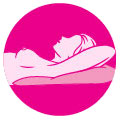
01
Lie down with your back resting on a flat, comfortable surface. Raise your left arm and put a pillow or rolled towel below your left shoulder.
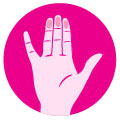
02
Use the 3 middle fingers of your right hand to feel for lumps, making sure they are pressed together. Use the convex of these 3 fingers together (not the fingertips) to feel for lumps.
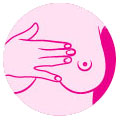
03
Keep your fingers straight and press them together on your left breast.
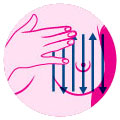
04
Using vertical movements, begin from armpits and move fingers downward until below the breast. Move toward the middle and back up. Repeat through chest and entire breast.
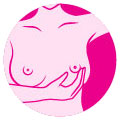
05
Feel under and around the nipple.
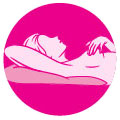
06
Repeat on your right breast using your left hand.
It may be nothing to worry about but always consult your healthcare provider if you discover a lump.
Risk Factors
Risk factors indicate a higher chance of developing breast cancer. It must be noted that having these risk factors doesn’t mean breast cancer is definitely in your future.
On the other hand, there are also women who have developed breast cancer without any of the risk factors.
Many factors can increase a woman’s risk of developing breast cancer:

Age
Growing older

Family History
Especially if close relatives such as your mother, child or sister were diagnosed with breast cancer

Personal Medical History
If you have had breast cancer

Early Onset of Menstruation
Before 12 years of age

Late Menopause
After 55 years of age

Not having borne children or not having borne them before 35 years of age

Being Overweight
The risk becomes higher when overweight during menopause

Alcohol Consumption

Smoking

Prolonged use of Hormonal Replacement Therapy or Estrogen Replacement Therapy
GUIDELINES FOR EARLY DETECTION

Learn and perform a breast self-exam (BSE) monthly.

Do a monthly BSE. Have an annual clinical breast exam by a doctor, or trained medical worker.

Continue monthly BSE. Schedule an annual clinical breast exam. Have a mammogram every year.
EARLY BREAST CANCER DETECTION IS YOUR BEST PROTECTION
